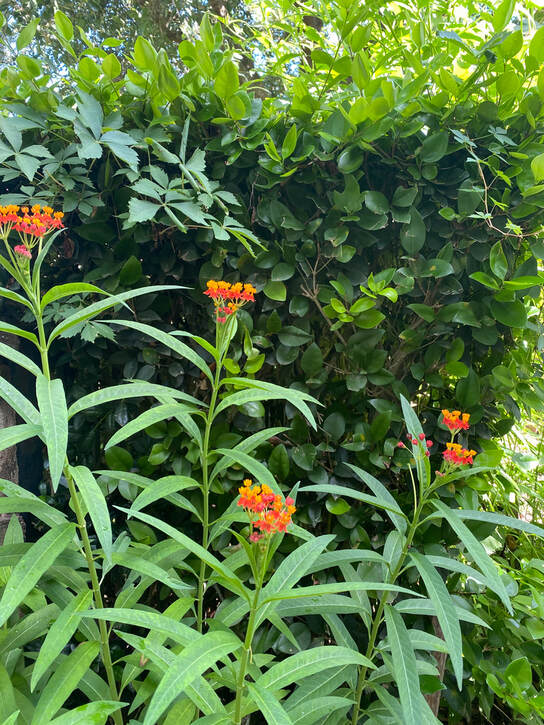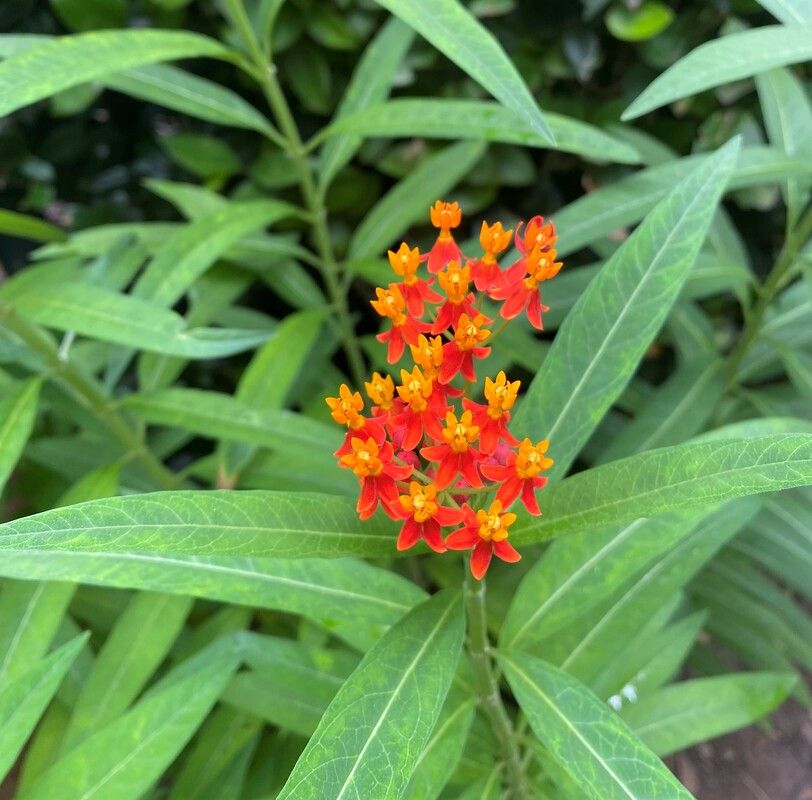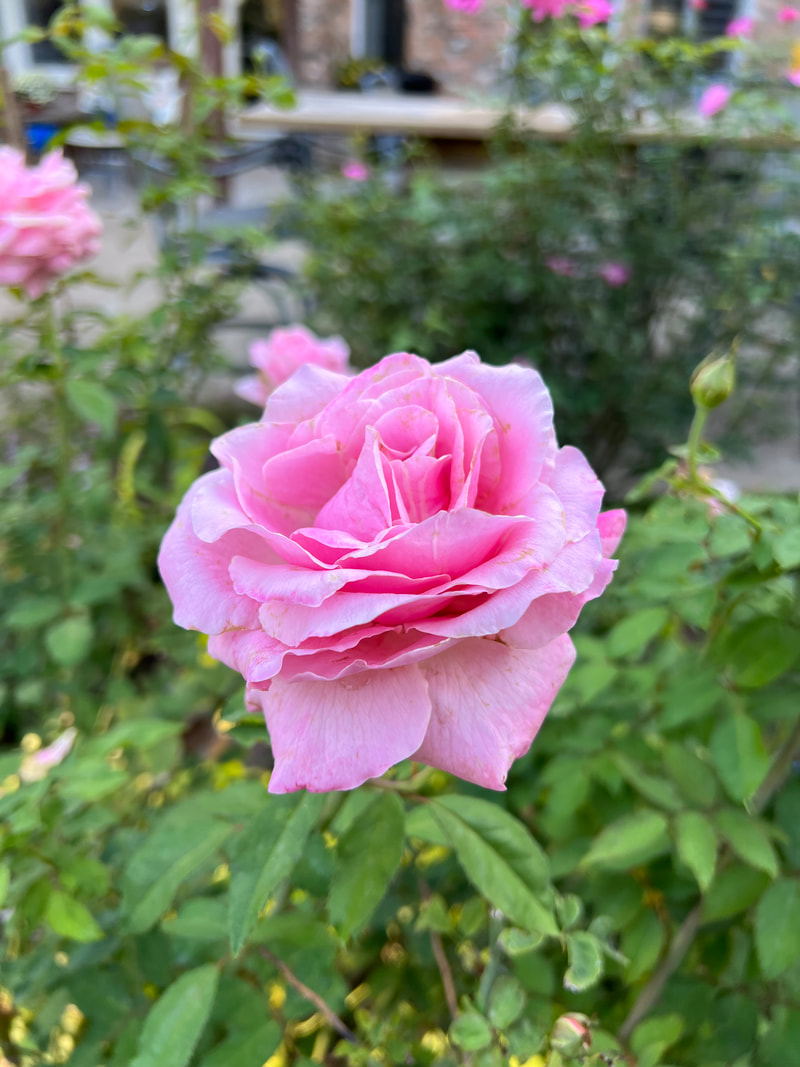|
Asclepias curassavica, Tropical Butterfly Weed -- woe is me. So...when we first left our acreage and moved onto this teeny, tiny lot, I was more than a little disheartened. I couldn't abandon gardening altogether (anymore than I could stop writing), but I didn't try as hard. When I saw this butterfly weed at one of my favorite nurseries, I didn't stop to think, "Native? Non-native?" I assumed that since that particular nursery was selling it and I'd had it in my previous garden (having purchased it from the same nursery), it was native. Not. I recently learned that it's not! I can't even find a definitive answer to where exactly it originated, so we'll just go with "the tropics". It's not a complete disaster. I only have it at the very end of our western hedge because it can get weedy and seems to be under control there. It's a host plant for monarch butterflies and is popular with other pollinators. Hummingbirds even seem to like it. It does well in hot climates. In areas of mild winters, like southeast Texas, it does too well. That's the problem. Its flowers encourage monarchs to remain in the area beyond migration time. They usually won't survive the winter. Furthermore, the plant tends to harbor the parasite Ophryocytis elektroscirrha (OE), whose primary host is the monarch butterfly. When it fails to die back in winter, concentrations of OE increase to dangerous levels for the butterflies. Doom? Ugh! According to various, trusted sources (that I've been chasing frantically), it's not all bad. Houston Audobon The National Wildlife Federation It is a host plant for monarchs. It's just not as safe as native milkweeds are. I can either pull it completely or controlling the problem by pruning it down to the ground twice a year. I've been doing that, anyway, because I knew about OE even without realizing or recalling that the plant isn't native. And since native milkweed is hard to find in nurseries, I ordered some seeds today. I love seeing butterflies in our garden -- the more, the merrier. If the native milkweed takes off, I'll probably pull the rest. Until then, I'll control it. Decision made.
0 Comments
Leave a Reply. |
Our GardenFor years, my husband and I worked at creating a series of gardens on our four-acre lot in a rural, Texas subdivision west of Houston. I have to say, it was a fantastic experience. Now, I have a pocket garden on a golf course. Archives
June 2024
Categories
All
NewsletterFrom me to you with a smile. Thank you!You have successfully joined our subscriber list. |



 RSS Feed
RSS Feed